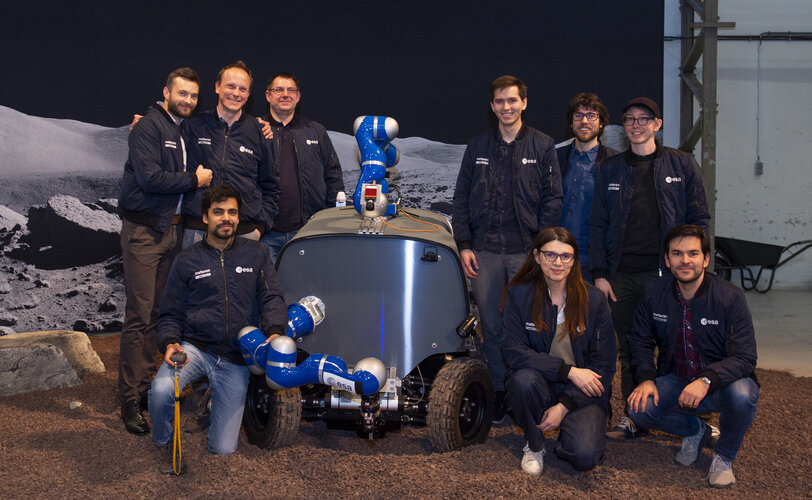
Image:
The team behind ESA’s Interact Centaur rover are all smiles after ESA astronaut Luca Parmitano successfully manoeuvres the rover in the Netherlands from space.
Last week’s dry-run of the Analog-1 experiment, in which Luca completed a “proficiency run” to test the system, set the stage for another flawless performance on 25 November.
Taking command of the rover (centre) located in a hangar in the Netherlands on Monday, Luca expertly drove it to three sites and used its robotic arm to collect rock samples, all while circling our planet at 28 800 km/h on the International Space Station.
Which samples to collect and save for further analysis was decided by a science team based at ESA’s Astronaut Centre in Cologne, Germany in conversation with Luca.
The Human Robot Interaction Lab provided the rover and test infrastructure and is located at ESA’s technical heart in the Netherlands.
The team finds novel ways for humans and robots to work together, furthering ESA’s exploration strategy that foresees astronauts controlling robots from orbit around the Moon or Mars or from inside a planetary base.
The Analog-1 rover, for example, is equipped with force feedback so astronauts can feel what the robot feels and adjust their grip accordingly using a joystick that allows for six degrees of motion.
The robot also sports “spot turn” wheels, allowing it to get out of tight places.
Both contributed to a successful sampling excursion, despite the 800-millisecond communication delay between Luca in space and the ground teams on Earth.
Acing this test proves the technology that ESA has developed to operate rovers from afar.
Analog-1 is the latest in a series of human-robot test campaigns that make use of the International Space Station. Called the Multi-purpose End-to-End Robotic Operation Network or Meteron, the project is developing the communication networks, robot interfaces and hardware to operate robots from a distance in space.
The Analog-1 experiment demonstrates the value of human-robotic cooperation in space and the technology that will be used as the basis for many of ESA’s exploration projects. Ministers from ESA’s Member States will convene later this month at the Space19+ in Seville, Spain, to decide on the Agency’s future course.
Click here for original story, Happy rovers
Source: ESA Space News